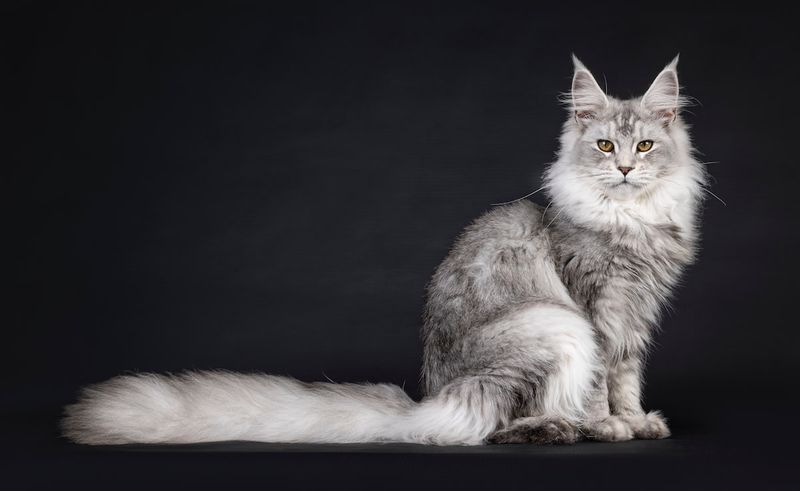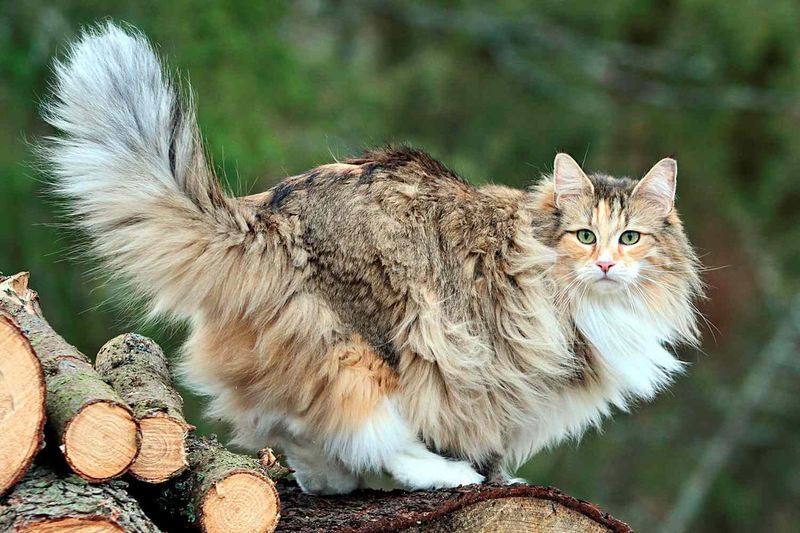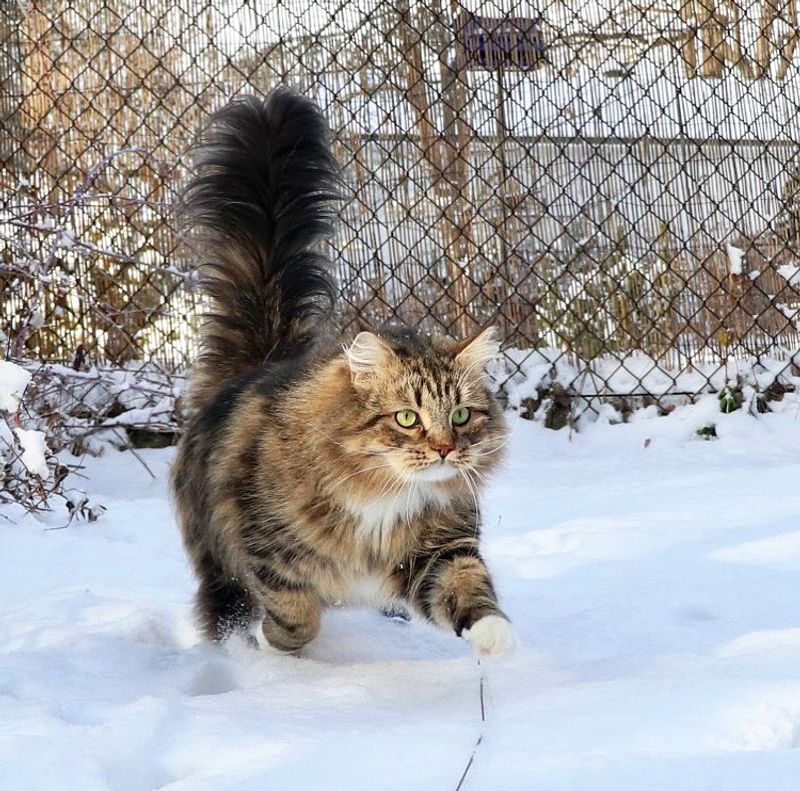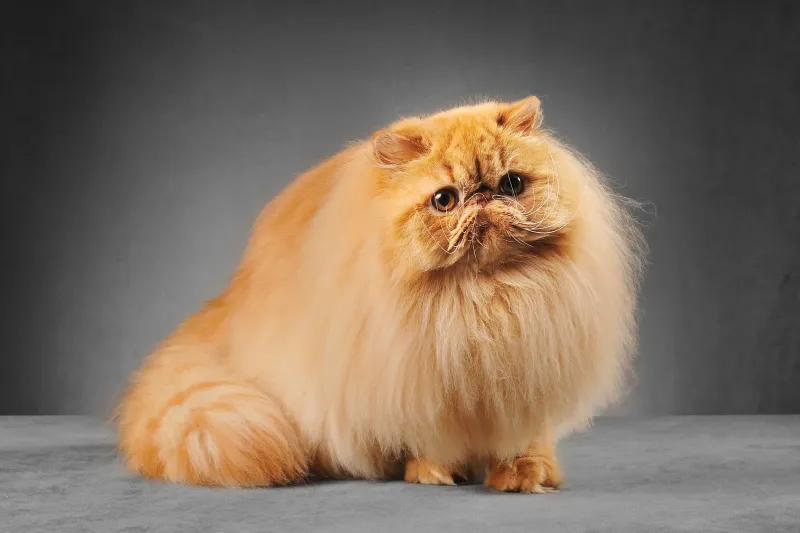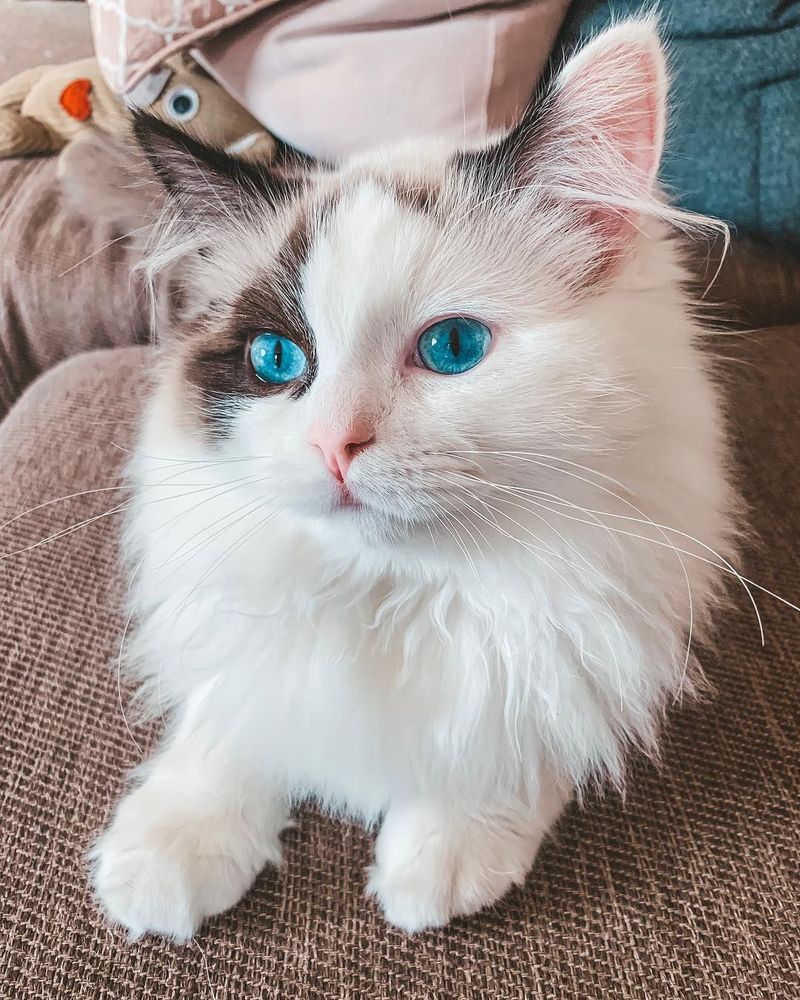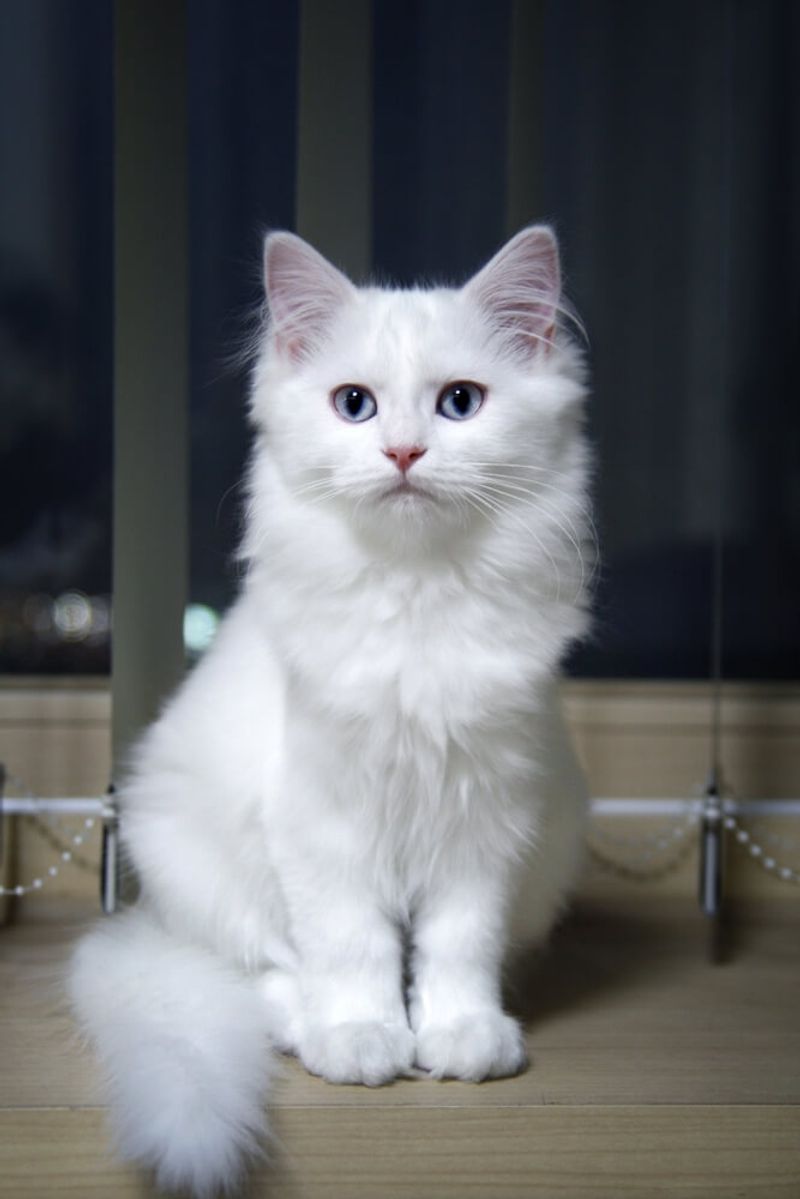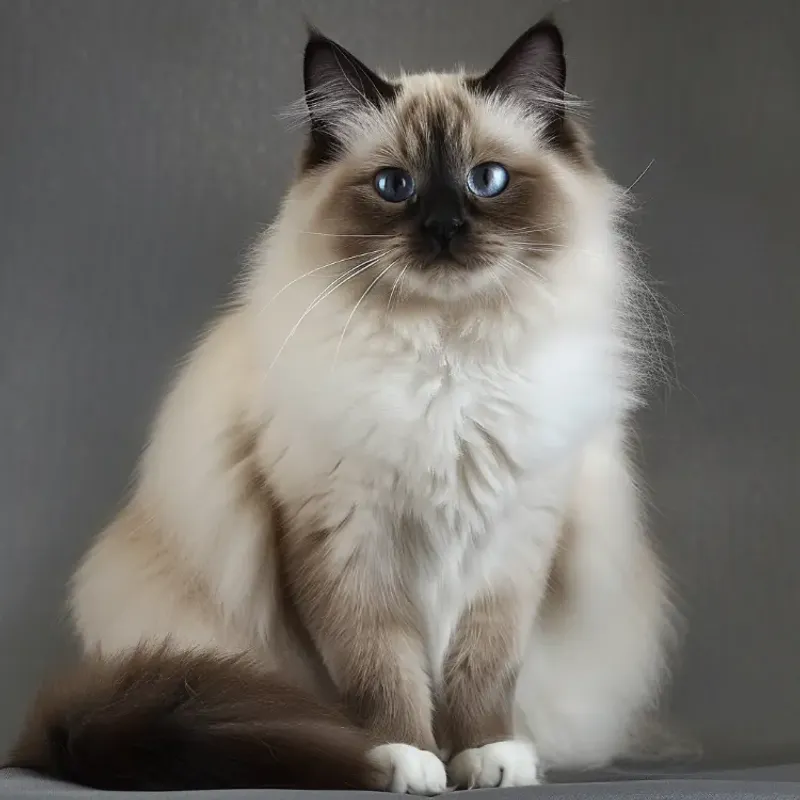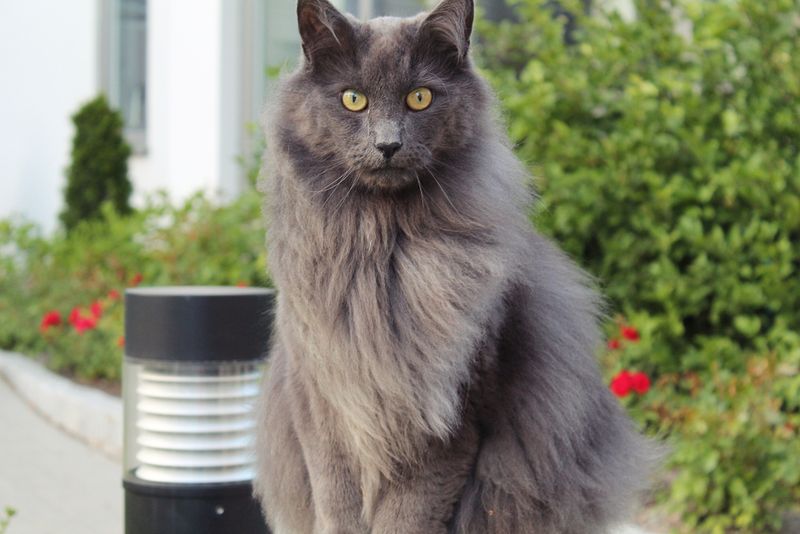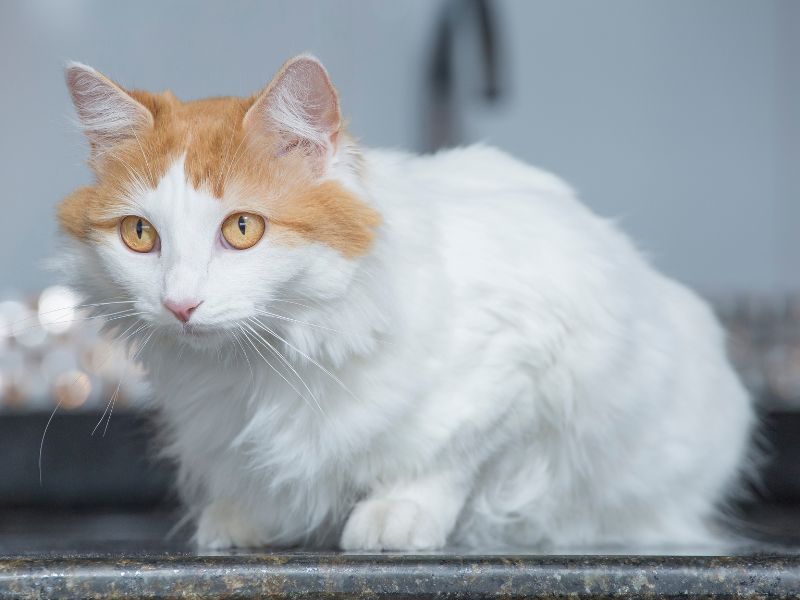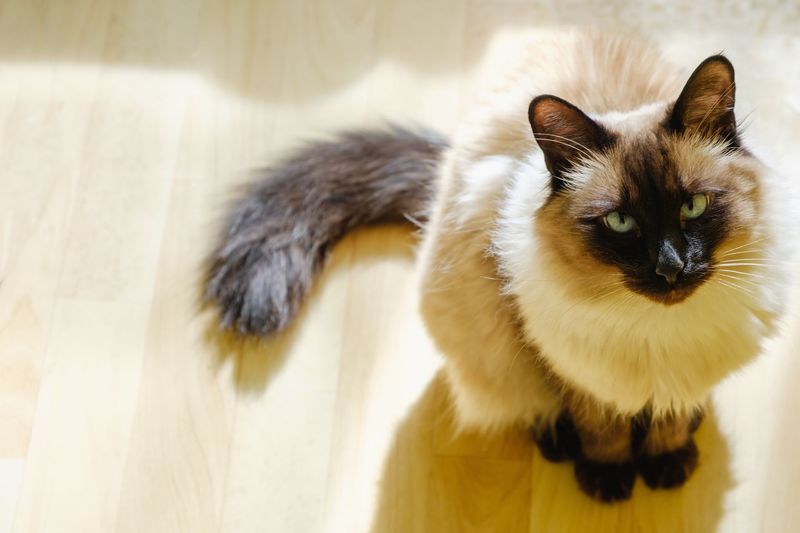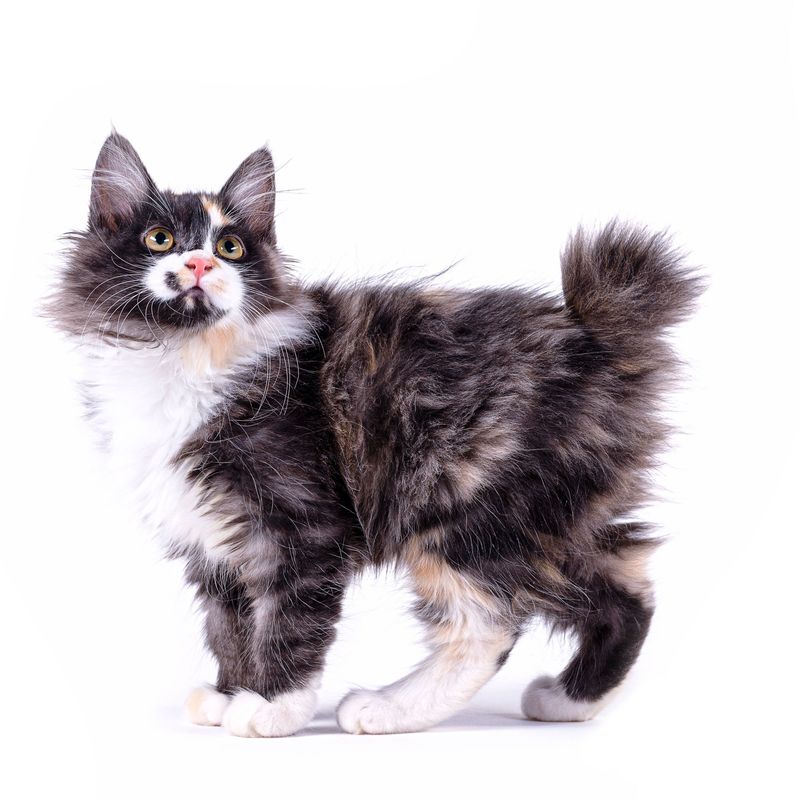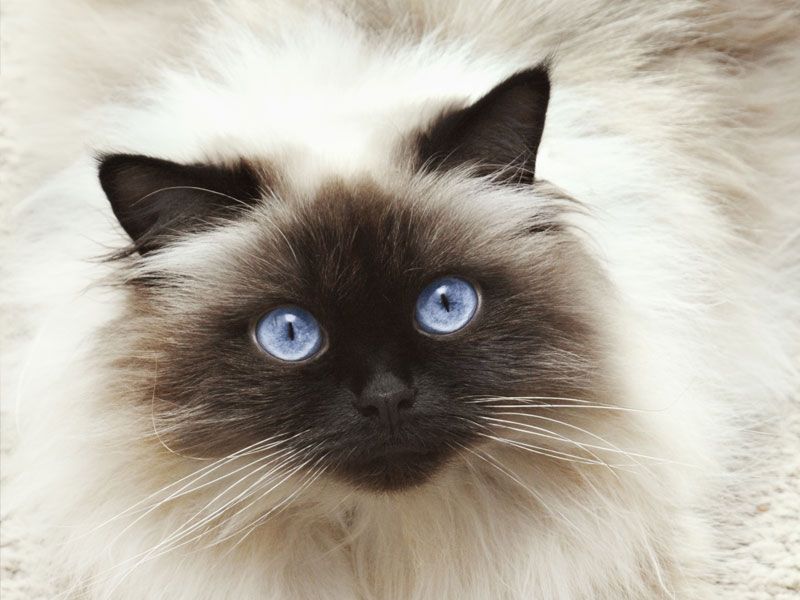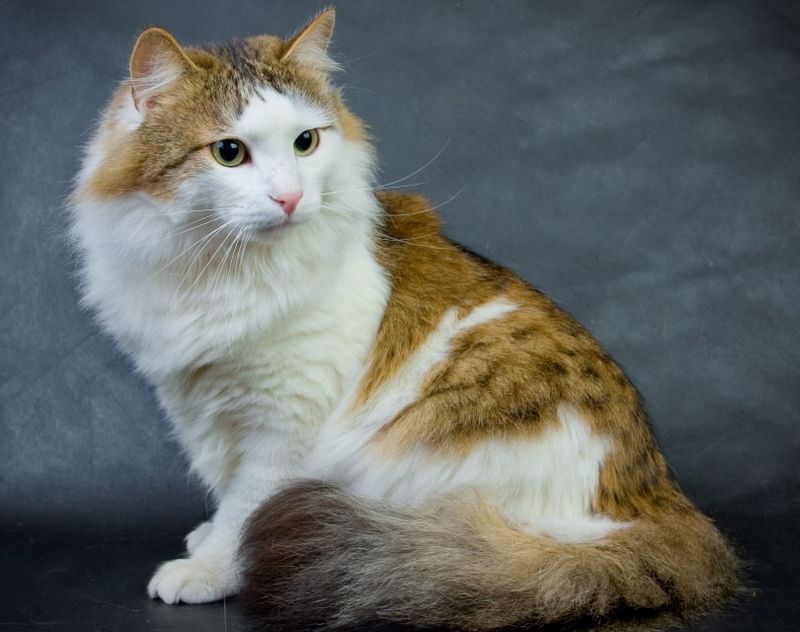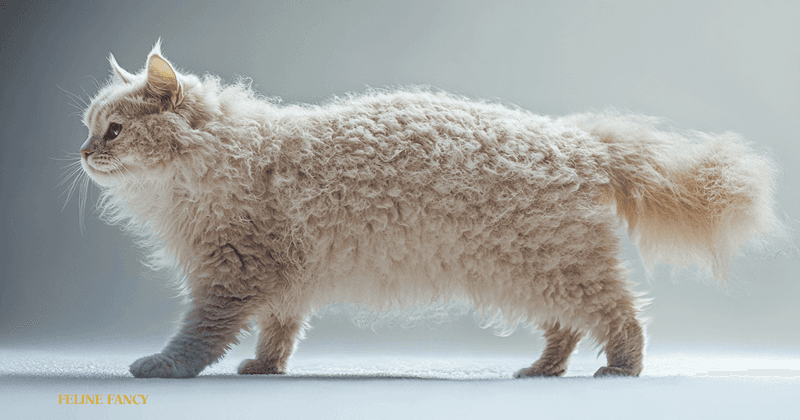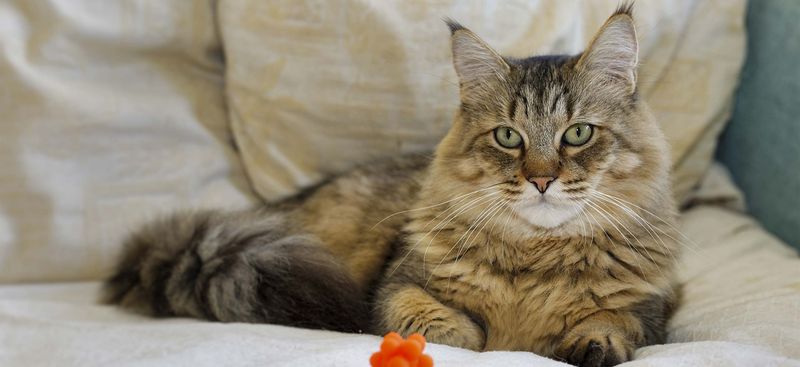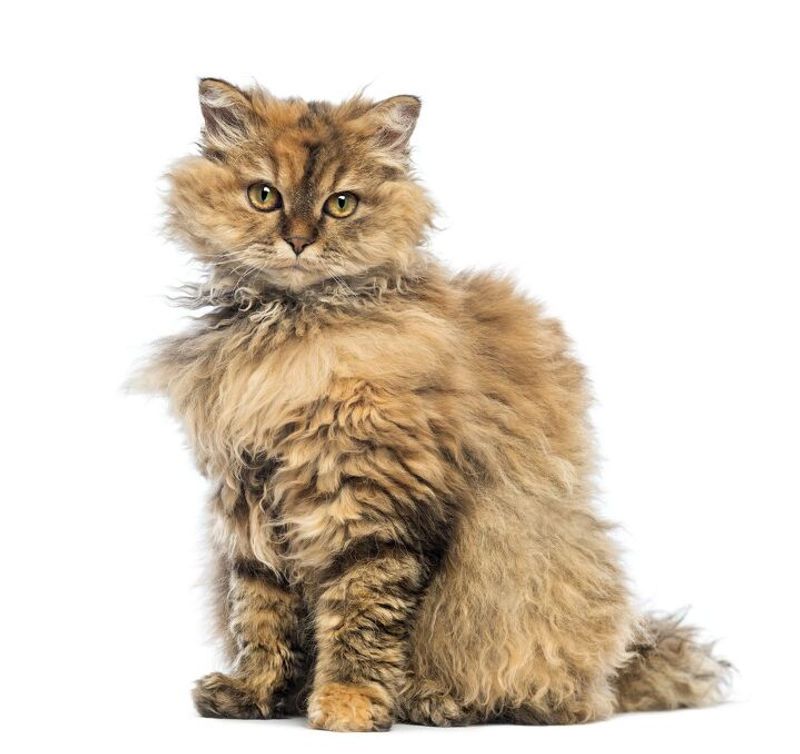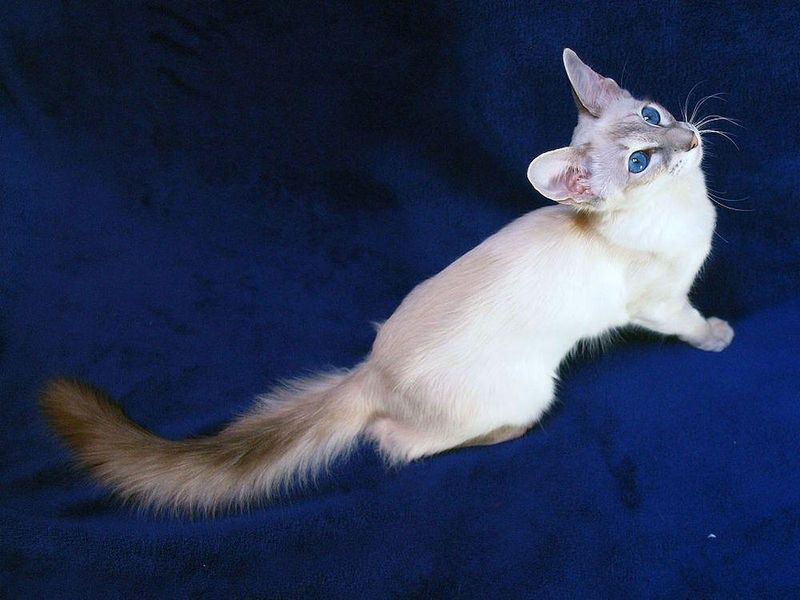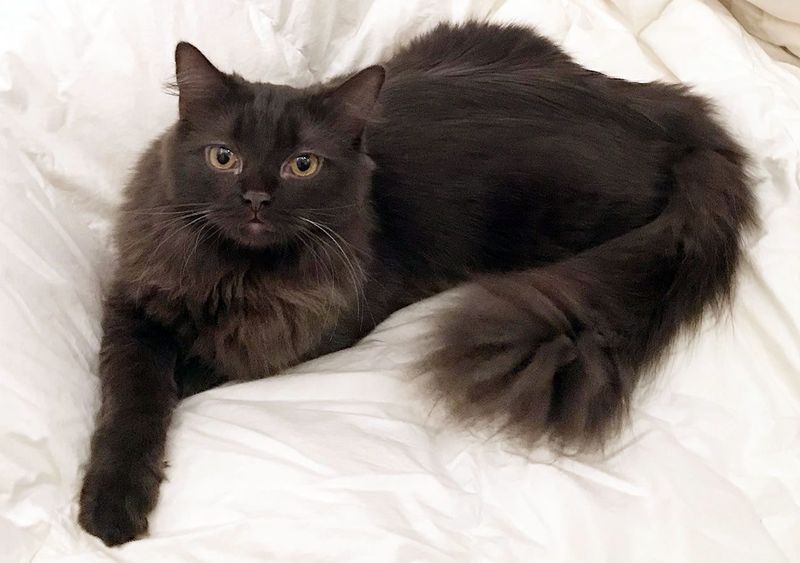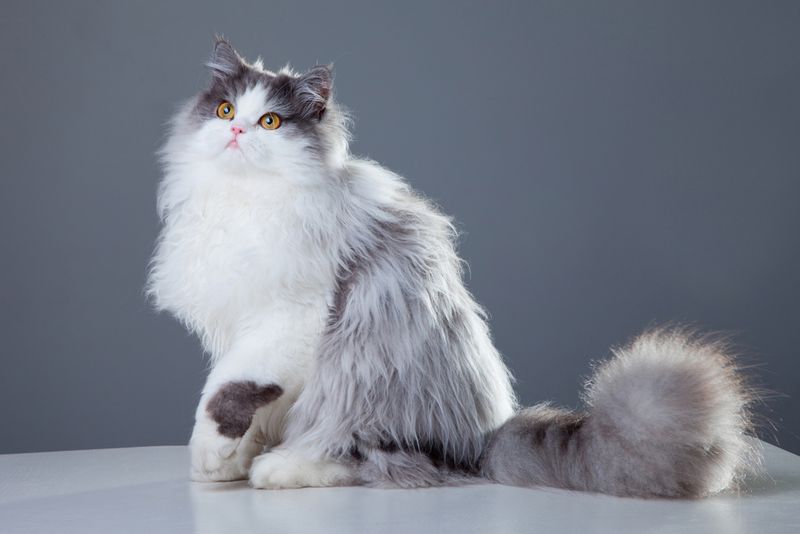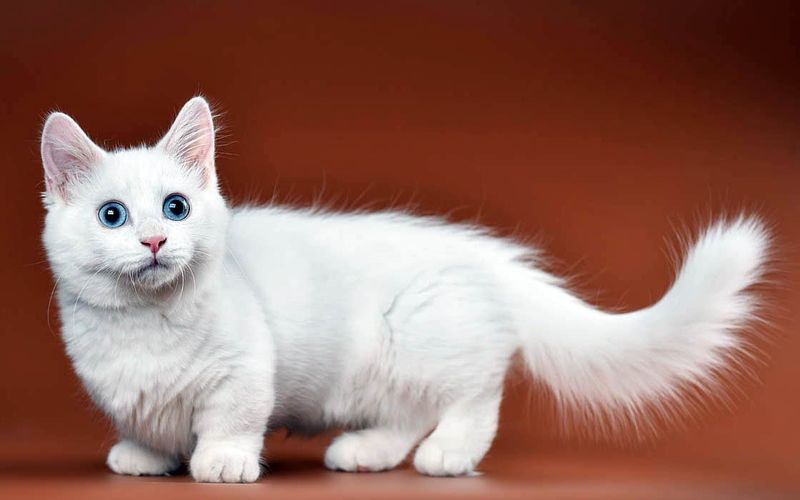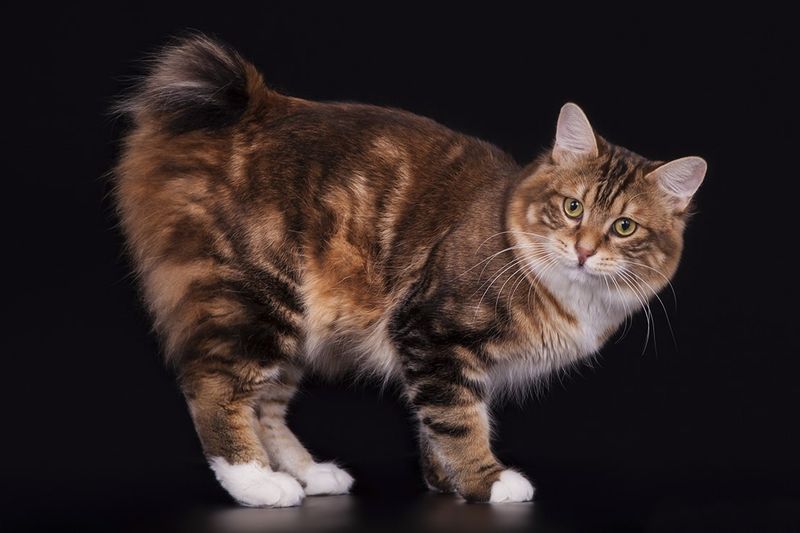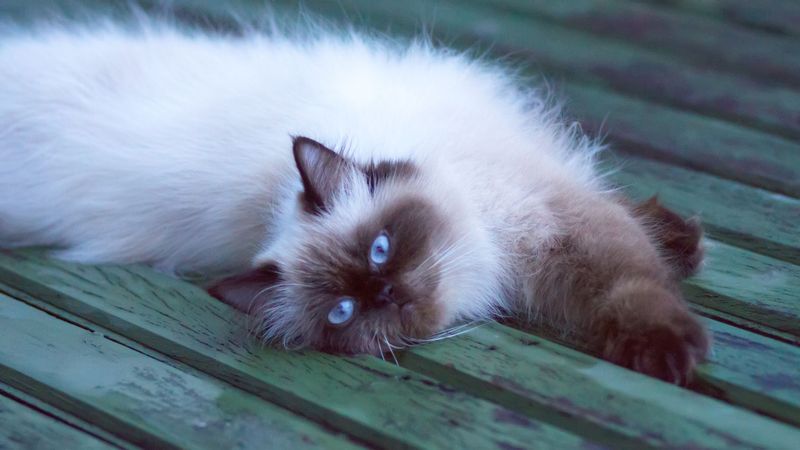📖 Table of Content:
- 1. Maine Coon
- 2. Norwegian Forest Cat
- 3. Siberian
- 4. Persian
- 5. Ragdoll
- 6. Turkish Angora
- 7. Somali
- 8. British Longhair
- 9. Birman
- 10. Nebelung
- 11. Turkish Van
- 12. Balinese
- 13. American Bobtail Longhair
- 14. Himalayan
- 15. Ragamuffin
- 16. Cymric
- 17. LaPerm Longhair
- 18. Pixiebob Longhair
- 19. Selkirk Rex Longhair
- 20. Chantilly-Tiffany
- 21. Javanese
- 22. York Chocolate
- 23. Exotic Longhair
- 24. Highland Fold
- 25. Munchkin Longhair
- 26. Kurilian Bobtail Longhair
- 27. Ojos Azules Longhair
- 28. American Curl Longhair
Cat lovers across America can’t resist the charm of a magnificent, fluffy tail. These luxurious appendages not only help cats with balance but also serve as expressive communication tools and cozy blankets during cold nights. From the majestic Maine Coon to the exotic Norwegian Forest Cat, fluffy-tailed breeds combine stunning looks with lovable personalities that captivate our hearts.
1. Maine Coon
Gentle giants of the cat world, Maine Coons sport impressive bushy tails that rival those of foxes. Their tail fur grows longer during winter months, providing extra warmth in their native New England climate. These friendly felines often wrap their magnificent tails around themselves when sleeping or drape them over their human companions as a sign of affection. Despite their size, Maine Coons move with surprising grace. Many Maine Coons enjoy water play, unlike typical cats, and use their raccoon-like tails for balance during their playful antics. Their sweet-natured temperament makes them ideal family pets despite their imposing size.
2. Norwegian Forest Cat
Straight from Norse mythology, the Norwegian Forest Cat boasts a magnificent tail that flows like a Viking banner. Winter brings an even more spectacular transformation as their tail fur thickens dramatically to combat Scandinavian cold. Farmers and sailors treasured these cats for centuries as skilled mousers with weather-resistant coats. Their almond-shaped eyes often gleam with intelligence against their wild-looking facial features. Surprisingly agile climbers, they use their bushy tails as counterbalances when scaling trees or leaping between surfaces. Their patient, independent nature combines perfectly with family loyalty, making them wonderful companions for households of all sizes.
3. Siberian
Hailing from Russia’s frigid forests, Siberians flaunt spectacular tails that seem almost too luxurious for their medium-sized frames. Their tails serve as natural scarves during brutal Russian winters, often wrapped around their bodies while sleeping. These ancient cats developed triple-layered coats that shed minimally despite their fluffy appearance. Surprisingly, many allergy sufferers report fewer reactions to Siberians compared to other breeds. Playful well into adulthood, Siberians use their expressive tails during acrobatic jumps and turns. Their vocal range impresses many owners, as they chirp, trill, and purr to communicate their ever-changing moods while their magnificent tails swish in agreement.
4. Persian
Aristocrats of the cat world, Persians carry their plume-like tails with the same dignified elegance as their flat-faced expressions suggest. Their tail fur often reaches extraordinary lengths, requiring regular grooming to prevent tangles. Historical favorites of royalty and nobility, these cats bring a sense of luxury to any home they grace. Their slow, deliberate movements match their contemplative personalities perfectly. Unlike more athletic breeds, Persians prefer lounging regally with their magnificent tails carefully arranged around them. Many owners describe watching their Persian’s tail expressions as reading an emotional barometer – from the happy upright question mark to the irritated low swish that signals their rare but definite displeasure.
5. Ragdoll
Sporting plush, raccoon-like tails that complement their striking blue eyes, Ragdolls carry their name-inspiring trait of going limp when held. Their medium-long fur feels silky rather than woolly, making their tails particularly pleasant to touch. Created in California during the 1960s, these gentle giants grow up to 20 pounds yet maintain kitten-like playfulness throughout their lives. Their color-point patterns create stunning contrast against their creamy bodies. Famous for their puppy-like following behavior, Ragdolls often trail their owners from room to room with their magnificent tails held high. Unlike many independent felines, these affectionate cats actively seek human companionship and often learn to come when called, their fluffy tails signaling their excitement.
6. Turkish Angora
Elegant dancers of the cat world, Turkish Angoras showcase feathery tails that seem to float behind them as they move. Their silky tail fur creates a dramatic plume effect, especially noticeable when they’re excited or alert. Ancient Turkish legends claim these cats descended from the cats of Prophet Mohammed, bringing blessings to households. Their intelligence shines through in their problem-solving abilities and playful antics. Swimming enthusiasts unlike most cats, Turkish Angoras often use their tails as rudders when navigating water. Their naturally occurring odd-eyed trait (one blue, one amber eye) adds to their mystical appearance in white-coated individuals, while their expressive tails communicate their bold, outgoing personalities to attentive owners.
7. Somali
Fox-like in appearance, Somalis boast one of the most impressive tails in the feline world – bushy, thick, and tapering to a fine point. Their tails often appear even more dramatic due to the ticking pattern that creates bands of color on each hair. Developed as the longhaired version of the Abyssinian, these active cats never seem to run out of energy. Their playful nature makes them entertaining companions who can turn any household object into a fascinating toy. Athletic jumpers and climbers, Somalis use their magnificent tails for balance during acrobatic feats. Their expressive faces, framed by large ears and almond-shaped eyes, seem to communicate an endless curiosity about their surroundings while their fox-brush tails follow their every movement with graceful precision.
8. British Longhair
Teddy bear faces paired with luxurious tails make British Longhairs irresistible to cat enthusiasts. Their plush tail fur maintains a consistent thickness from base to tip, creating a magnificent cylindrical shape rather than tapering. Less known than their shorthaired cousins, these dignified cats carry themselves with the same reserved British charm. Their round eyes often match their coat colors, enhancing their stuffed-toy appearance. Content to observe household activities from comfortable perches, British Longhairs save their energy for short bursts of play. Their calm, undemanding nature makes them excellent apartment companions, while their fluffy tails provide both visual delight and a comforting touch for lucky owners who earn their measured affection.
9. Birman
Sacred cats of Burma according to legend, Birmans enchant with silky, plumed tails that complement their distinctive white-gloved paws. Their medium-length tail fur rarely mats, making them lower-maintenance than some fluffier breeds. Ancient temple companions, these color-pointed beauties were said to have gained their golden eyes by gazing upon their goddess. Their gentle voices match their sweet temperaments perfectly. Famous for their patience, Birmans excel with children and other pets in multi-animal households. Their expressive tails often curl slightly at the tip when they’re content, creating a shepherd’s crook shape that adds to their mythical appearance while they observe their kingdom with serene blue eyes.
10. Nebelung
Wrapped in mystery like their name suggests (“creature of mist” in German), Nebelungs display spectacular silver-blue tails that seem to shimmer in certain lights. Their tail fur grows particularly long and silky, creating an ethereal appearance when they move. Relatively rare even today, these Russian Blue relatives maintain a devoted following among those seeking both beauty and brains. Their reserved nature with strangers transforms into devoted affection with their chosen people. Sensitive to household moods, Nebelungs often use their expressive tails to communicate their emotional state. Many owners describe their Nebelung’s tail as a mood barometer – held high and straight in confidence, puffed in excitement, or wrapped tightly around them when seeking security in this misty-coated marvel.
11. Turkish Van
Nicknamed “swimming cats,” Turkish Vans boast magnificent brush-like tails often carried high like proud flags. Their tail fur features a silky texture that repels water – handy for a breed famous for their unusual love of swimming. Ancient cats from the Lake Van region of Turkey, these athletic felines sport distinctive auburn markings on their heads and tails against pristine white bodies. Their seasonal coat changes mean extra-fluffy tails in winter months. Energetic and intelligent, Turkish Vans require stimulating environments to prevent mischief. Many owners install cat-safe water features to indulge their natural swimming tendencies, where their remarkable tails serve as rudders while navigating water with surprising skill for felines.
12. Balinese
Graceful dancers with silky plumes, Balinese cats carry their magnificent tails like flowing scarves. Despite their elegant appearance, these cats descended from naturally occurring longhaired Siamese mutations rather than Bali as their name suggests. Vocal communicators like their Siamese relatives, Balinese express opinions on everything happening in their domain. Their striking blue eyes and color-point patterns create dramatic contrast against their creamy coats. Athletic and agile, these cats perform impressive acrobatic feats using their plumed tails for balance. Unlike many longhaired breeds, Balinese coats lack an undercoat, resulting in minimal shedding and maintenance while still providing the visual drama of their spectacular flowing tails.
13. American Bobtail Longhair
Despite their name suggesting otherwise, longhaired American Bobtails often develop surprisingly fluffy, shortened tails that resemble pom-poms. Their unique tail structure results from a natural genetic mutation rather than artificial breeding practices. Developed to resemble wild bobcats, these sturdy cats combine rugged looks with gentle temperaments. Their expressive eyes seem to communicate deep intelligence to those who know them well. Excellent travelers, American Bobtails often adapt well to leash training and car rides unlike many cats. Their shortened yet fluffy tails serve as excellent communication tools, with subtle movements and positions conveying everything from playful interest to serious hunting focus in these charismatic felines.
14. Himalayan
Persian elegance meets Siamese coloring in Himalayans, whose spectacular plumed tails often exceed their body length when fully extended. Their tail fur requires regular grooming to maintain its show-stopping appearance and prevent painful matting. Created through careful crossbreeding rather than occurring naturally, these striking cats combine the best traits of their parent breeds. Their sweet expressions come from flat faces while their striking blue eyes derive from Siamese heritage. Quieter than Siamese yet more playful than Persians, Himalayans strike a personality balance between their ancestors. Their magnificent tails often become favorite grooming projects for dedicated owners who enjoy maintaining the silky texture and dramatic appearance of these living works of art.
15. Ragamuffin
Cousins to Ragdolls, Ragamuffins showcase plush, walnut-shaped tails that feel like squirrel fur to the touch. Their tail hair grows longer on the underside, creating a dramatic fan effect when held high. Developed to expand Ragdoll color options, these gentle giants maintain kitten-like playfulness well into their senior years. Their muscular bodies belie their tender-hearted nature and preference for lap time. Famous for their patience, Ragamuffins excel in homes with children or elderly owners seeking affectionate companions. Many owners describe their Ragamuffin’s tail as a mood indicator – from the happy question mark position during play to the gentle wrap-around during cuddle sessions that showcase their desire for close physical contact.
16. Cymric
Fascinating genetic marvels, Cymrics (pronounced kim-rick) sport luxuriously fluffy tails despite being categorized as a tailless breed. Their tail variations range from complete absence to full-length plumes, with every variation between. Essentially the longhaired version of Manx cats, these robust felines originated on the Isle of Man. Their rounded appearance, with back legs longer than front, creates a distinctive rabbit-like hop when running. Playful problem-solvers, Cymrics often learn to open doors and cabinets with ease. Those lucky enough to have the “longie” tail variation enjoy the best of both worlds – the unique Cymric personality paired with a magnificent fluffy tail that complements their dense double coat.
17. LaPerm Longhair
Sporting curly, bottle-brush tails that defy gravity, LaPerm Longhairs create visual drama with every movement. Their unique curled coat results from a spontaneous genetic mutation that occurred on an Oregon farm in 1982. Born bald and developing their distinctive curls as they mature, LaPerms surprise new owners with their changing appearance. Their tail curls feel springy to the touch, unlike any other cat breed’s texture. Affectionate without being demanding, these cats balance independence with companionship perfectly. Their extraordinary tails become conversation pieces for visitors who can’t resist touching the unusual texture – which these sociable cats generally welcome, unlike more aloof breeds who guard their personal space.
18. Pixiebob Longhair
Wild-looking yet domestically sweet, longhaired Pixiebobs feature shortened yet notably fluffy tails that enhance their bobcat-like appearance. Their tail length varies from 2-6 inches, with each cat sporting unique patterns of rings and spots. Developed in the Pacific Northwest to resemble coastal bobcats, these muscular cats often display polydactyl paws with extra toes. Their deep-set eyes beneath heavy brows create an expression of primeval wisdom. Dog-like in their loyalty, many Pixiebobs learn to walk on leashes and play fetch with enthusiasm. Their shortened yet impressively fluffy tails serve as excellent communication tools, with subtle movements indicating their hunting excitement or contentment in these remarkable domestic cats with wild appearances.
19. Selkirk Rex Longhair
Teddy bear cats with cotton candy tails, Selkirk Rex Longhairs showcase plush, curly appendages that feel woolly rather than silky. Their unique coat resulted from a spontaneous mutation discovered in a Montana shelter cat in 1987. Unlike other rex breeds, Selkirks feature dominant curly genes, meaning even mixed-breed offspring inherit their distinctive texture. Their substantial bodies and round faces enhance their stuffed-toy appearance. Patient and laid-back, these cats adapt well to various household situations. Their magnificent tails, with curls that loosen and tighten throughout their lives based on hormones and seasons, provide both visual delight and tactile pleasure to lucky owners who can’t resist running their fingers through the unusual woolly texture.
20. Chantilly-Tiffany
Semi-longhaired elegance defines the Chantilly-Tiffany, whose silky, feathered tail complements their chocolate or lilac coloring perfectly. Their tail fur grows particularly long and fine, creating a dramatic plume effect when held high. Nearly extinct in the 1970s, dedicated breeders saved these chocolate beauties from disappearing entirely. Their golden eyes seem to glow against darker coat colors, creating a striking appearance. Known for their quiet, melodious voices, Chantilly-Tiffanies communicate with soft chirps rather than loud meows. Their magnificent tails serve as emotional barometers – from the confident high-carry during happy moments to the expressive swish that indicates their rare moments of frustration in these generally easygoing companions.
21. Javanese
Mistakenly named after an Indonesian island, Javanese cats actually developed in North America as longhaired Colorpoint Shorthairs. Their plumed tails flow like elegant scarves, particularly noticeable against their color point patterns. Vocal entertainers, these cats express opinions on everything from dinner selections to your choice of television programs. Their athletic bodies support impressive jumping abilities that often surprise new owners. Highly intelligent problem-solvers, Javanese cats require mental stimulation to prevent mischief. Their expressive tails telegraph their emotional states clearly – from the happy question mark of excitement to the irritated lashing that signals their disapproval of household changes, making them transparent companions for those who learn to read their tail language.
22. York Chocolate
Rare treasures in the cat world, York Chocolates display magnificent plume-like tails that complement their rich brown coats perfectly. Their tail fur grows particularly long and silky, creating dramatic movement when they walk. Developed on a New York dairy farm in the 1980s, these cats resulted from an accidental breeding rather than deliberate creation. Their working cat heritage shows in their excellent mousing abilities and barn-friendly personalities. Devoted without being clingy, York Chocolates form deep bonds with their families. Their spectacular tails serve practical purposes beyond beauty – from providing warmth during cold New York winters to acting as balancing tools during their impressive climbing feats that reflect their working cat ancestry.
23. Exotic Longhair
Persian beauty without high maintenance describes the Exotic Longhair, whose plush tail resembles a luxurious bottle brush. Their tail fur grows dense rather than long, creating a substantial appearance without excessive length. Originally appearing as longer-coated kittens in Exotic Shorthair litters, these cats gained recognition as their own variety. Their teddy-bear faces combine with more moderate maintenance requirements than traditional Persians. Playful well into adulthood, Exotic Longhairs enjoy interactive toys that satisfy their hunting instincts. Their magnificent tails, held high during confident moments and wrapped around their bodies during rest periods, provide both visual appeal and emotional comfort to these sweet-natured companions who blend Persian looks with more active personalities.
24. Highland Fold
Adorable folded ears paired with magnificent plumed tails make Highland Folds irresistible to cat enthusiasts. Their tail fur grows particularly thick and long, creating a dramatic contrast to their compact bodies. Essentially longhaired Scottish Folds, these cats inherit the same cartilage mutation affecting their ears. Their round owl-like faces enhance their perpetually surprised expression that captivates visitors. Adaptable and even-tempered, Highland Folds adjust well to various household situations. Their impressive tails often become favorite grooming projects for dedicated owners who enjoy maintaining the silky texture while watching for the subtle tail signals that indicate their Highland’s mood – from the slight twitching during bird-watching to the gentle curling during contented naps.
25. Munchkin Longhair
Short legs meet magnificent tails in Longhaired Munchkins, whose plush appendages often appear oversized compared to their low-riding bodies. Their tail fur grows particularly long and silky, creating a dramatic contrast to their shortened limbs. Controversial for their short-legged mutation, these cats nonetheless move with surprising agility and suffer no health issues related to their unique structure. Their playful personalities and normal jumping abilities (though less height) surprise many first-time observers. Social butterflies who enjoy meeting new people, Munchkins adapt well to various household situations. Their spectacular tails serve both ornamental and practical purposes – from creating visual balance to their unique proportions to providing counterweight during their characteristic running style that resembles a ferret’s bound.
26. Kurilian Bobtail Longhair
Hailing from Russia’s remote Kuril Islands, longhaired Kurilian Bobtails sport unique pom-pom tails that appear fluffy despite their shortened length. Their tail structure contains 2-10 kinked vertebrae, creating distinctive shapes unique to each cat. Natural athletes with powerful hind legs, these cats jump impressive heights from standing positions. Their wild appearance belies their deeply domestic nature and affection for human companions. Excellent fishers in their native habitat, many Kurilians maintain fascination with water into domestic life. Their shortened yet remarkably fluffy tails serve as identification markers – no two Kurilian tail shapes match exactly, creating natural “fingerprints” for these unusual cats from one of the world’s most isolated regions.
27. Ojos Azules Longhair
Extremely rare even among cat enthusiasts, longhaired Ojos Azules combine striking deep blue eyes with luxuriously fluffy tails regardless of coat color. Their tail fur grows particularly fine and silky, creating dramatic movement with every step. Discovered in New Mexico in 1984, these cats showcase a unique gene mutation affecting eye color without the health issues common in white blue-eyed cats. Their name simply means “blue eyes” in Spanish, reflecting their most distinctive feature. Gentle and devoted, the few existing Ojos Azules form strong bonds with their families. Their magnificent tails complement their most striking feature – those deep blue eyes that seem to pierce directly to the soul, creating an unforgettable impression on anyone lucky enough to encounter these exceedingly uncommon felines.
28. American Curl Longhair
Distinctive backward-curling ears paired with magnificent plumed tails make Longhaired American Curls instantly recognizable. Their tail fur grows particularly silky and fine, creating elegant movement that complements their unique ear shape. Born with straight ears that gradually curl backward in their first weeks, these cats fascinate owners with their changing appearance. Their ear cartilage remains firm yet flexible, unlike Scottish Fold’s more problematic mutation. Perpetually kitten-like in personality, American Curls maintain playfulness well into their senior years. Their spectacular tails serve as emotional barometers – from the confident high-carry during exploration to the gentle wrap-around during cuddle sessions with their beloved humans in these affectionate and adaptable felines.

